Exploring the Efficacy of Tongxinluo in Heart Attack Prevention
Written on
Chapter 1: Introduction to Tongxinluo
Recent clinical research has shed light on the effectiveness of Tongxinluo, a traditional Chinese remedy, in treating heart conditions. However, the ingredients of this treatment may be surprising to many.
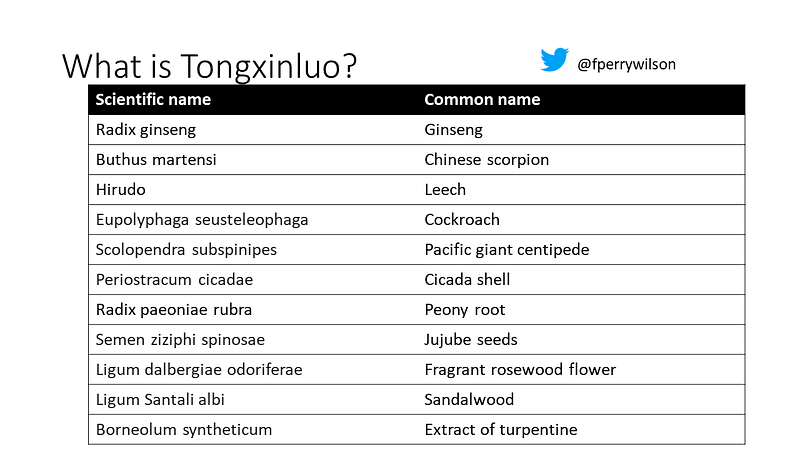
In my work, I frequently engage in clinical research, particularly focusing on the development and evaluation of artificial intelligence models. These models often aim to predict specific health outcomes. A significant challenge we face is "explainability." As AI algorithms grow more complex, they resemble a black box, making it difficult for clinicians to trust them without clear explanations of their functionality. Simply stating that “it works” is insufficient for establishing credibility.

Trust is generally easier to cultivate when discussing medications than when addressing AI systems. For instance, when a new antihypertensive drug is introduced, it effectively lowers blood pressure, and we understand the underlying mechanism of action. Most medications come with established methods explaining how they exert their effects.
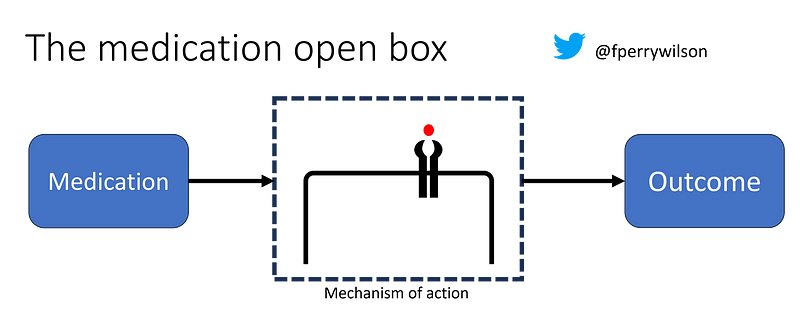
However, what if there exists a treatment that is effective yet lacks a clear understanding of its mechanism? This brings us to Tongxinluo, which translates to "to open the network of the heart." This remedy has been utilized in traditional Chinese medicine for centuries to address angina, receiving official approval from the Chinese state medicine agency in 1996.
Today, we will analyze a comprehensive randomized trial of Tongxinluo for treating ST-elevation myocardial infarction, as published in JAMA. Unlike many conventional drugs, Tongxinluo comprises a blend of plant and insect components.
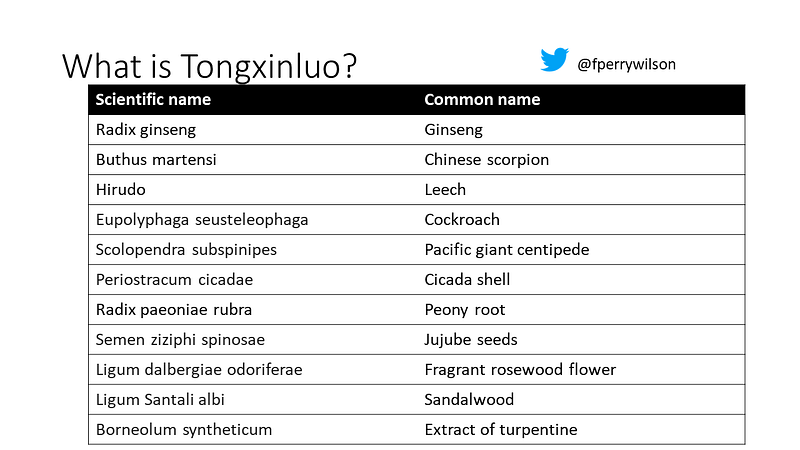
Conducting a trial on such a concoction in the U.S. would be challenging; it's unlikely that an institutional review board would approve it, considering its complex ingredient list. Yet, let's focus on the trial itself.
The study involved 3,797 patients diagnosed with ST-elevation MI, randomly assigned to receive either Tongxinluo (four capsules, three times a day for 12 months) or a matching placebo. The placebo was designed to mimic the appearance and scent of Tongxinluo.
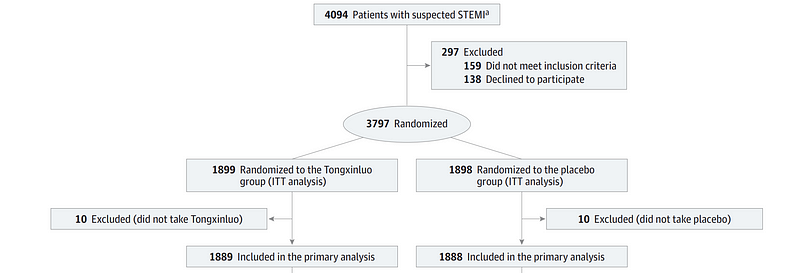
The researchers conducted the trial with both participants and researchers blinded to group assignments, and the statistical analysis was completed by both the primary research team and an independent agency in China. The results were promising, showing significantly fewer major cardiovascular and cerebrovascular events within 30 days for those receiving the treatment compared to those on placebo.
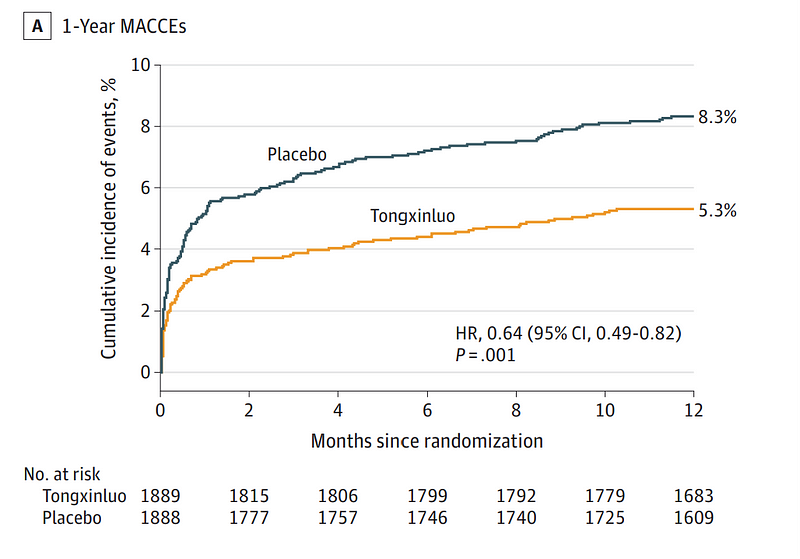
One-year follow-up data indicated that 8.3% of the placebo group experienced major adverse events, while only 5.3% of the Tongxinluo group faced similar outcomes. If this were a new pharmaceutical compound, it could potentially revolutionize heart attack treatment and positively impact market shares.
Nonetheless, there are significant concerns regarding the study's generalizability. Conducted entirely in China, the findings may not necessarily apply to diverse populations elsewhere. Additionally, the standard of post-MI care in this study appears inferior to what is typical in the U.S., with only about half of the patients discharged on beta-blockers.

The most pressing concern, however, is the unclear mechanism behind Tongxinluo’s effectiveness. Is it the leech extract that potentially thins the blood? Or could it be the antioxidants found in ginseng, or perhaps something derived from centipedes or sandalwood? Rather than validating traditional Chinese medicine, this trial highlights a missed opportunity for deeper scientific inquiry into these practices.
Understanding the importance of substance purity in medicine is crucial. Pure substances yield predictable effects and interactions, allowing for reliable treatment protocols. They can also be rigorously tested for quality, which minimizes risk.
While some may find comfort in the idea of a natural remedy crafted through generations, it’s essential to recognize that natural doesn't equate to safe. I appreciate having access to purified medications like aspirin rather than relying on less predictable herbal alternatives.
The researchers deserve commendation for their rigorous investigation of Tongxinluo. Although we may not have discovered a definitive new treatment for ST elevation MI, we are now closer to identifying promising therapeutic avenues. The future of heart attack treatment may lie in understanding the components of such mixtures.
This video discusses the intriguing question: Would You Eat A Centipede to Prevent a Heart Attack? It explores the unconventional methods and ingredients in traditional remedies.
In this video titled Centipede Bite Worse Than ALL Stings?!, the focus shifts to the surprising effects and perceptions surrounding centipede bites, adding context to their potential medicinal uses.